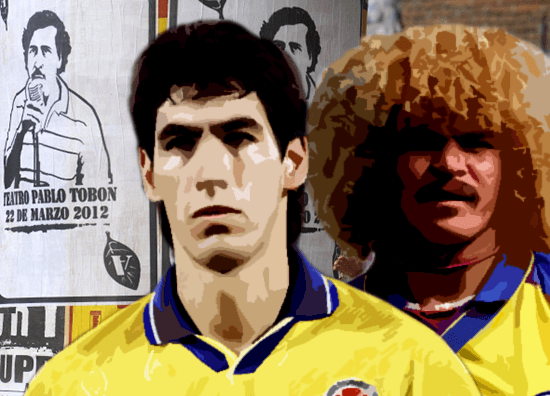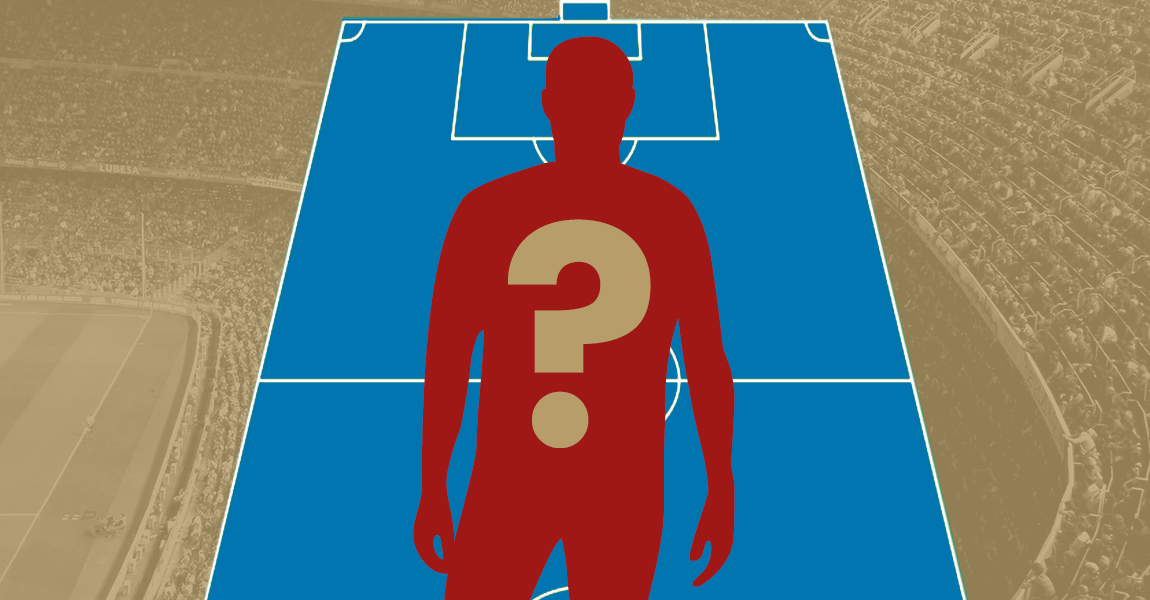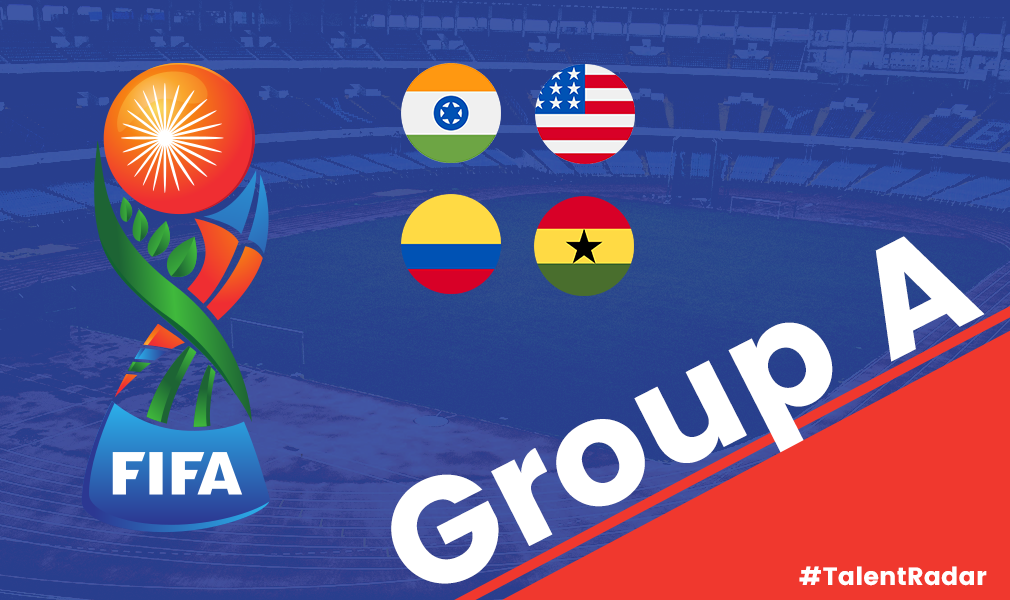20 years and 2 days after that horrifying day in Colombian football, the current crop of players will go head-to-head against Brazil in probably THE most important football match in their history. And it is just that, a football match. Matthew Harrison recalls the other golden generation of Colombia, and the subsequent tragedy that followed.
‘They are my ‘dark horse’ to win this World Cup.’ You will have heard this phrase brandished around carelessly in the past few weeks. In footballing terms, a ‘dark horse’ is defined as a team that emerges from the shadows and rises to prominence. Belgium, Chile, even England, have all been hailed in recent months as potential dark horses to lift the 18 carat gold trophy on the 13th July in the Maracana. However, undoubtedly one of the main teams that have got themselves tied up in the tag of ‘dark horse’ are one of South America’s most proud footballing nations: Colombia.
In terms of an attacking arsenal, there are very few teams that can match them – even with the loss of the talismanic Radmael Falcao, who failed to make the final cut after not recovering from a knee ligament injury picked up at the start of the year. Falcao or no Falcao, coach Jose Pekerman still has the likes of James Rodriguez, Jackson Martinez, Juan Cuadrado, Freddy Guarin and many more gifted players at his disposal. However, despite this conveyor belt of talent that is currently being reeled out of Colombia, this arguably team does not stand up to the last time Colombia were cited for success in a World Cup.
Nevermind the word ‘dark horse’, ‘favourites’ was the label rubberstamped on the Colombians in the buildup to the 1994 World Cup by none other than Pele. Yes, ahead of Brazil, Germany, Argentina and all of the World football elite, Pele, and many others for that matter, headed to their nearest bookmakers to place their money on Los Cafeteros. The 1990s was Colombia’s golden generation decade (they featured in World Cups in 1990, 1994 and 1998), before sinking into a sort of football hibernation during the 2000s. So how come a nation who were bestowed as some sort of outside bet for the World Cup in 1994 denigrate so rapidly over the next 20 years? Well, arguably it all spawned from the 1994 World Cup itself and it is a story that goes on to become far more than a football tragedy.
Football in Colombia and the Colombian League was growing at a rapid rate during the late 80s. The Copa Libertadores had been dominated by Argentina, Brazil and Uruguay over the first 29 years of its existence with Paraguayan club Olimpia being the only club outside of the three aforementioned nations to lift South American club football’s most coveted prize. This was all to change in 1989, as against all the odds, Atletico Nacional, hailing from the Colombian city of Medelin, claimed the prize against Olimpia. Colombian football was on the map. Nacional had won the competition playing with swagger and a combination of neat, passing play intermingled with pieces of individual brilliance usually associated with the players hailing from Brazil.
Nacional manager, Francisco Maturana, had gone on to create a playing philosophy that would go on to be the fulcrum of the nation’s football team as whilst leading Nacional to success, Maturna had also been promoted from youth coach of the national team to being put in charge of the senior squad, who he led to a 3rd place finish in the 1987 Copa America (defeating hosts Argentina) and to qualify for the 1990 World Cup – Colombia’s first since 1962. Invariably, Maturna’s Nacional style was to be deployed for the national team and to general success as the backbone of his Nacional team filled up the Colombia squad list.
After Maturna had led to Colombia to the second round of Italia 1990, Europe would come calling and Maturna would depart South America for Real Valladolid, only to return back to Colombia in 1993 and win the league with America de Cali. Maturna had tasted success in Colombia once again and he decided that he wanted to have another crack at the World Cup with the national team. This is where the Colombia bandwagon really started to go into overdrive.
By now, despite being a relatively small nation, Colombia had a wealth of talented players available to call-up: the excellent keeper Oscar Cordoba ( perhaps predictably,the legendary and ultimately crazy goalie Rene Higuita would find himself in jail for the 1994 World Cup); the experienced defensive midfielder Leonel Alvarez, who had been integral to Nacional’s Libertadores victory; pacey striker and Parma starlet Faustino Asprillia and the ever reliable Freddy Rincon – this is to name just a few. However, you cannot talk about Colombian football without mentioning their most iconic player and the catalyst to Colombia’s attacking game: Carlos Valderrama. Valderrama’s famous blond afro is legendary, but his footballing skills were arguably more eye-catching. A classic South American number 10, who could turn a game on its head with one wonderful piece of skill or killer pass, it was to be Valderrama who would orchestrate be the nation’s on-field, as they went on to have a remarkable qualifying campaign.
Colombia’s impressive qualifying campaign was what was to make them one of the outsiders to lift the 1994 World Cup. After opening their qualification with a 0-0 draw with Paraguay and a 1-0 win away in Peru, everyone would stand up and take notice of the Colombians when they defeated the Argentinians 2-1 in Barranquilla. 11 days later and Colombia were comprehensibly beating Peru 4-0 having once again drawn with Paraguay a week earlier. Now all that stood between Colombia and qualification was Argentina and a trip to Bueno Aires.
One point. Just one point would see Colombia through to the World Cup. Many would see an away trip to El Monumental to take on Los Albicelestes as the most daunting of tasks, especially when you throw in the fact that Argentina had never lost a World Cup qualifier on home soil. This was a team including legends such as Oscar Ruggeri, Fernando Redondo, Diego Simeone and the goal machine himself, Gabriel Batistuta. Were the Colombians fazed? Not at all. Quite the opposite actually.
In the build up to the game, Maradona had claimed through hand gestures that Argentina were ‘up here’, before lowering his arm to the floor and claiming that Colombia were ‘down here’. El Diego seemed to be the only one truly confident in the Argentina camp. By the end of the night Maradona, watching on from the stands, would be utterly crestfallen.
5-0. All Colombia needed was a point, but instead they sent a message to world football by comprehensibly thrashing the Argentinians. One of Colombia’s coaches, Diego Barragon, claimed before the game, “We had seen a lot of worried Argentina supporters on our trip from the hotel to the stadium, which bred confidence.” Clearly the Colombians were up for it. Argentina just could not cope with Valderrama and he was metronomic in his control of the game. It was only 1-0 to the away team at half time, after Freddy Rincon had scored minutes before the interval; of course, the goal was created by some joyful play by Valderrama skipping past Argentina defenders before playing a through ball to Rincon. The break would surely give Alfio Basile time to regroup his Argentinean troops, but as Valderrama describes it in the ESPN documentary The Two Escobars, “we went nuts.” With Argentina having to win to go through to the World Cup automatically they opened themselves up to one of football’s most deadly attacks at the time and the Colombians gladly accepted the invitation to get forward. Four goals later, courtesy of Asprillia (twice), Rincon again and Adolfo Valencia and Colombia had claimed the most famous win in their history.
6 games, 4 wins, 2 draws, 13 goals and just 2 goals conceded in qualifying, not to mention two victories over group favourites Argentina, and Colombia were heading to USA 94 with everything appearing to be rosy on the surface. A quite favourable draw threw Colombia in the same group as Switzerland, Romania and the host nation, USA, and the Colombians looked ready for a successful World Cup.
Colombian club football on the rise, the national team being tipped to do well in the World Cup and a whole host of exciting talent breaking through – Colombia’s footballing landscape seemed to gleam. However, beneath the surface brewed a dark undercurrent that had been boiling over for the best part of a decade.
How had Colombian football risen so sharply through the 80s and into the 90s? Many would argue that the biggest contributor was the thriving drugs trade in the country, which led to what was dubbed narco-fútbol. Atletico Nacional’s surgence in the late 80s coincided with a time in which renowned drug uber-lord Pablo Escobar, a fan of the Medellin club, reportedly became involved with the side behind the scenes. Escobar, an ardent football fan, was presented with the opportunity to combine his love of football by pumping some of his limitless drug money into the club, with an opportunity to perform some money-laundering alongside fuelling his passion. Nacional is just one of many examples of the drug trade infiltrating football, yet Pablo Escobar’s rule was perhaps seen as the most bloody, as as well as feeding and helping the poor, those who ended up on the wrong side of Escobar almost always met a gruesome end; reportedly, almost 5000 met their end thanks to Escobar’s cartel.
Subsequently, with the drug trade becoming ubiquitous in Colombian club football, it was going to have repercussions on the national team. By the time USA 94 came around, Pablo Escobar was dead having been shot during a firefight between his cartel and authorities closing in on him, and instead Colombia was talking about their revered captain instead: Andres Escobar. Despite being a key component of the Atletico Nacional setup which was so influenced by his namesake Pablo, Andres Escobar could not be more different from the brutal drug baron. A kind, honest and respected family man, Andres was one of those unassuming footballers who focused on performing his duties as a footballer professionally, whilst aiding charities off the pitch. On the pitch, Escobar was considered one of the best defenders in South America and after enjoying a highly successful spell in his homeland, the 27-year-old looked certain to be on his way to AC Milan after the World Cup in the US. Instead, by the halfway point of the 94 World Cup Escobar had been shot dead.
The hype around Colombia unravelled around them and the team went from being dubbed as outside bets at winning the World Cup to the tournament’s biggest underachievers. As always with success, everyone wanted a piece of the Colombian bandwagon and with everyone hopping on the cart, it soon became unstable. Despite many football pundits and experts lavishing talk of glory on Colombia, many nearer the camp claimed that there was a lot of unrest developing; as well as pressure from back home demanding the team perform on the big stage, there was also rumours of betting syndicates and drug cartels infiltrating the Colombia camp and even potentially influencing team selection. It was even claimed by playing coach staff alike that there were death threats sent to the team with details of what would happen to them if they let the nation down in the finals.
Colombia started the tournament by playing their trademark quick passing and attacking football, but in a sign of things to come, nothing would go their way as Romania took a 2-0 half-time lead against the run of play. The game would finish 3-1 to the Romanians and the Colombians had suffered their first sucker punch of the World Cup.
Four days later and Colombia came up against USA in the Rose Bowl, Pasadena. What transpired would be the catalyst for one of football’s most tragic stories. Colombia had to win, but the USA, buoyed on by the home crowd, continued to press. A 35th minute cross from John Harkes, looked destined to land in the arms of Oscar Cordoba; instead, Andres Escobar slid across to block the cross, but instead deflected the ball into his own net past a wrong-footed Cordoba. Own goal. Final score: 2-1 to the USA, with Colombia only scoring a consolation in the last minute. Colombia would grab a consolation 2-0 victory in their third and final group match against Roy Hodgson’s Switzerland, but it was too little, too late and the Colombians were out. From being tipped as potential winners to going home early – the Colombian’s fall from grace was monumental. What the nation didn’t realise was that events were too take a far more tragic turn.
Despite being warned against it, Andres Escobar headed out to a bar in Medellin 6 days after Colombia had been eliminated from the World Cup. Escobar was noted for his well-mannered and down to earth nature and not one to seek trouble, yet at 3am in the morning, having separated from his friends and finding himself alone in a car park, trouble found Escobar. After an argument blew up with three men Escobar had also encountered in a nightclub earlier in the night, two of the men pulled out handguns and shot the Colombian captain 6 times, reportedly shouting the word “Goal!” each time they shot him.
There were several theories behind Escobar’s murder: some believed a gambling syndicate were responsible as they sought revenge for Escobar’s own goal costing them a fortune, whilst others simply believe that Escobar was in the wrong place at the wrong time. It was speculated that no-one would have dared harm Escobar had football-mad Pablo Escobar still been alive, as he was so fond of some of the players, particularly Nacional players like Andres. Whatever the motive, this was the most tragic unveiling of the dark heart that permeated throughout Colombian football and Colombian society in general. As Maturna said following the death, “It wasn’t football that killed Andres Escobar, but it was Colombian society that killed Andres Escobar.”
The current crop are arguably not as talented as the 1994 crop, but this Colombian team will thankfully not be playing under the pressure of 94 and without that sinister undercurrent that ultimately led to the downfall of one of football’s failed ‘golden generations’.
- Sorry, Chris: An Apology to Coleman - June 16, 2015
- 20 years on: Colombia’s original golden generation & subsequent Escobar tragedy - July 3, 2014
- World Cup Golden Boot: A Bony-fide Goalscorer - June 11, 2014
























































